Integrated testing in community and low-threshold settings
INTEGRATE has adapted resources initially developed for use in relation to HIV testing, such as publicity materials, information leaflets, and risk groups specific materials, to include testing for viral hepatitis and STIs. The new tools and materials have been piloted in community and low threshold testing services across Europe and are designed to support the implementation of testing for additional diseases. The pilot sites’ experiences have been written up as cases descriptions for your inspiration:
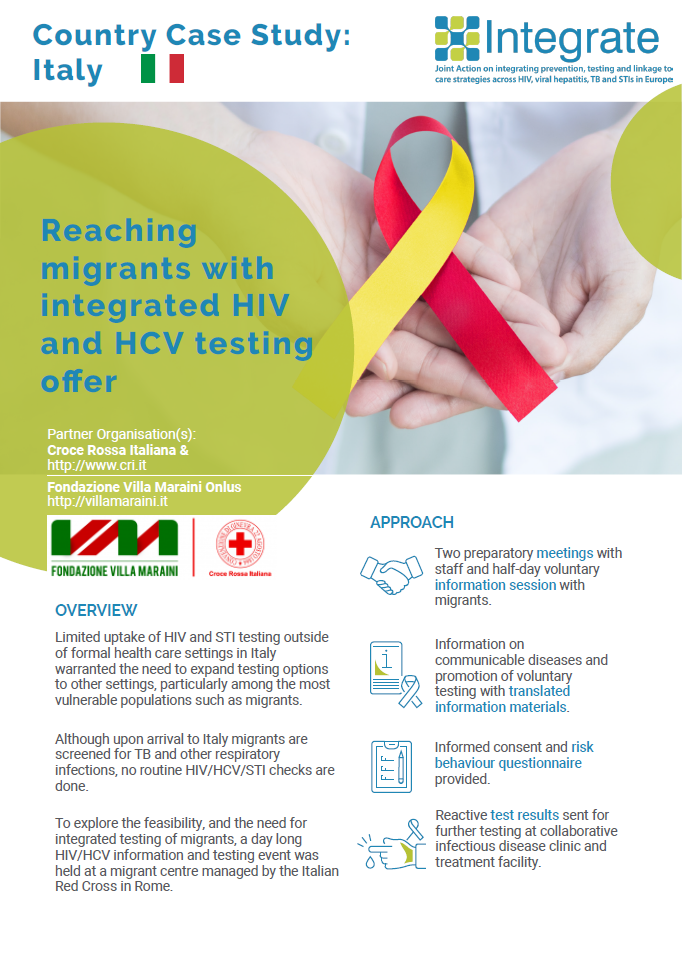
Reaching migrants with integrated HIV and HCV testing offer
Croce Rossa Italiana & Fondazione Villa Maraini Onlus
Italy

Introducing STI-testing for MSM at community testing site Checkpoint Zagreb
Croatian association for HIV and viral hepatitis (HUHIV)
Croatia
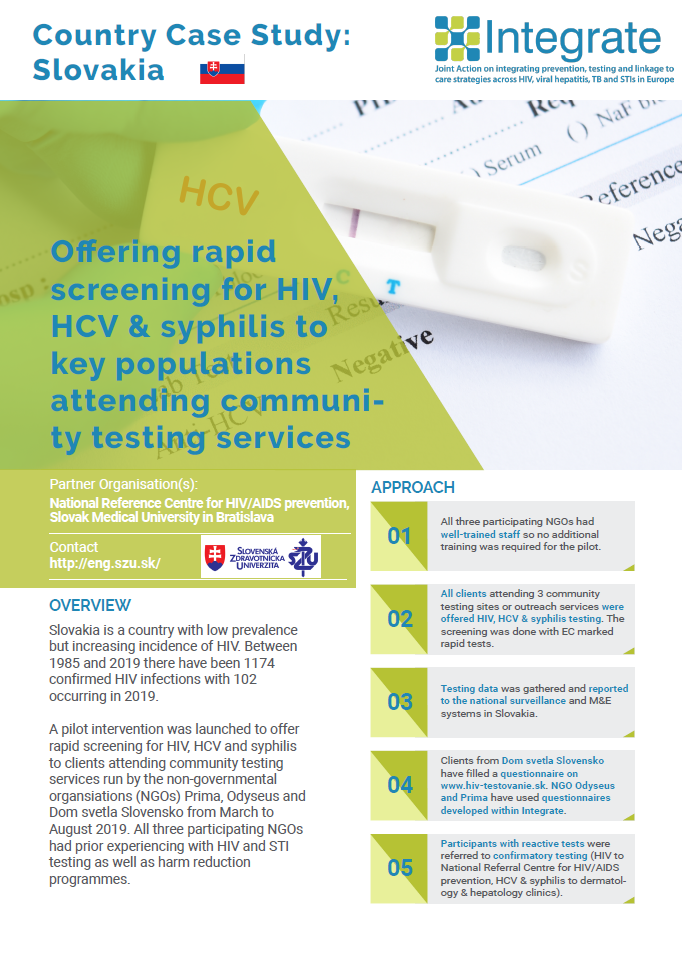
National Reference Centre for HIV/AIDS prevention, Slovak Medical University in Bratislava
Slovakia
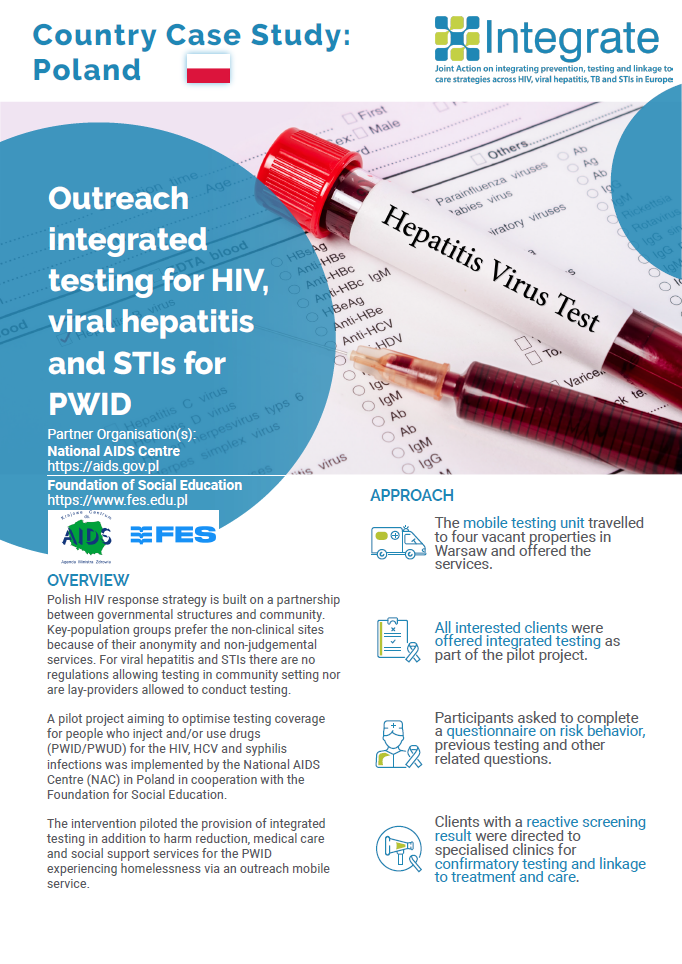
Outreach integrated testing for HIV, viral hepatitis and STIs for PWID
National AIDS Centre & Foundation of Social Education
Poland
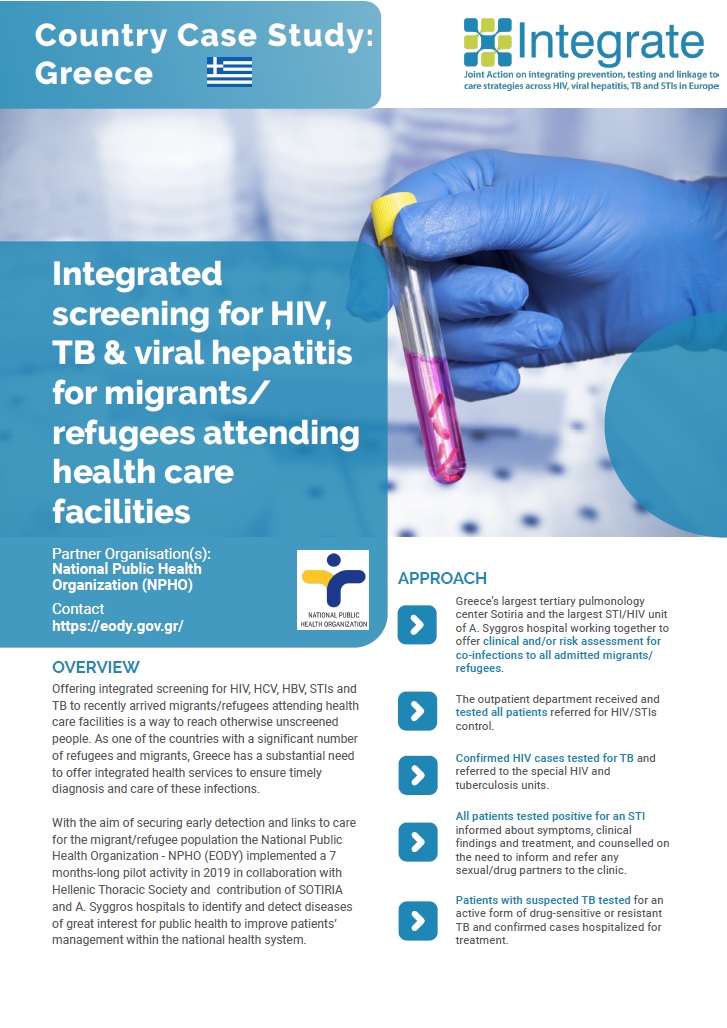
National Public Health Organization (NPHO)
Greece

Implementing risk-assessment in Checkpoints to optimize testing services provision for MSM
National Public Health Organization (NPHO) & Organisation Against Drugs
Greece
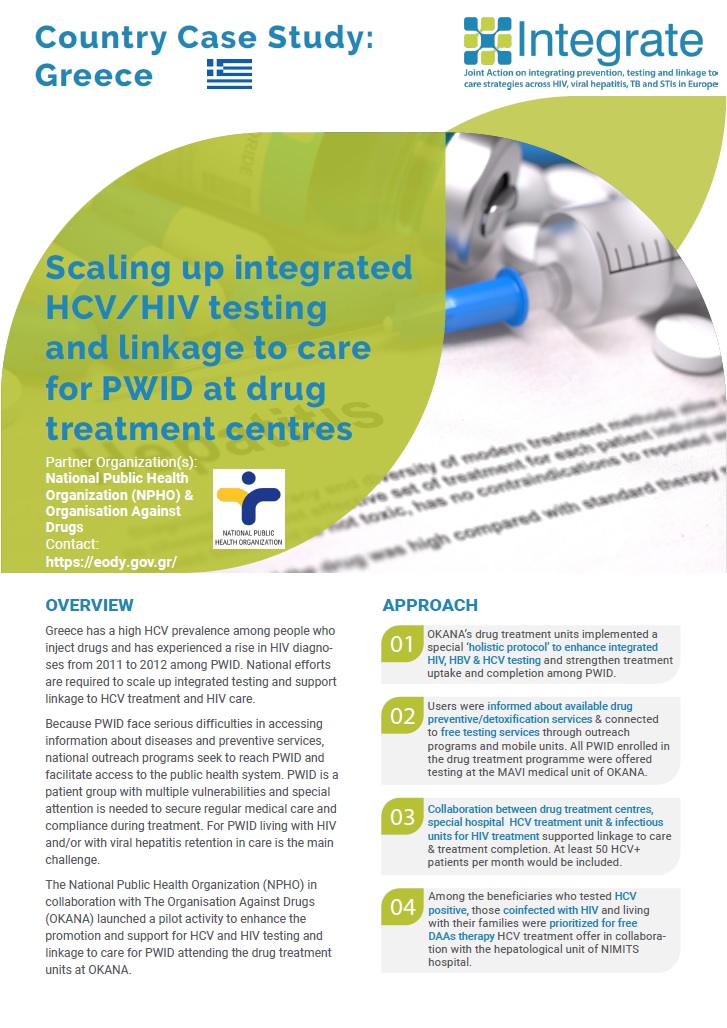
Scaling up integrated HCV/HIV testing and linkage to care for PWID at drug treatment centres
National Public Health Organization (NPHO)
Greece
Inform and engage staff
Staff at community and low-threshold testing services often see the need for offering multi-disease testing to the attending clients. However, there may be barriers impeding the roll out of multi-disease testing such as legal or regulatory restrictions allowing testing only for some diseases, logistic challenges and need for additional funding, test kits and training of staff. Here are some ideas and resources to kick-start the process:
-
Read about the scientific rational for integarted testing, present and discuss with your colleagues: ETW materials Spring & Week info pages
-
Map current testing and referral practices to have a baseline to measure progress against [baseline data collection]
-
Implement a risk assessment tool to help staff identify the clients’ testing needs: Risk assessment
-
Apply the easy to use quality improvement tool to develop your routine testing praxis: PDSA tool
-
Encourage colleagues to sign up for a free 12-module online course on clinical, epidemiological and public health aspect of integarted testing presented by leading European experts: Public health online learning module
-
Attend webinars where testing experts debate new approaches and the latest recommendations from ECDC and others: Watch webinars here
Set up and monitor testing
Adding new diseases to the testing offer requires planning and logistics - whom, when and how to tests, communicate results and secure linkage to care as well as financial aspects - must be addressed. It is key to engage in collaborations with specialist clinics to secure smooth referral for confirmation testing and/or treatment initiation. Once the testing for additional diseases is up and running regular feedback to staff on any new positives found can keep the momentum and sustain engagement. Here are some ideas and resources to get this in place:
-
Select some numeric indicators, which you can monitor over time [ indicators WP6]
-
Secure thorough data collection to show progress and achievements and to generate regular reports that show number of tests conducted and any positives found [data collection forms]
Sustainability and funding
Expanding the test offer with additional diseases has a cost, which community and low-threshold setting may be able to fund on pilot or project basis but maybe not as a routine service. Engagement with national health structures to show the unmet needs for multi-disease testing and the contributions of community and low threshold setting in reaching vulnerable key populations is a way to advocate for sustainable funding. Some resources to support this are available here:
-
Consider arranging a national multi-stakeholder meeting to facilitate dialogues across sectors to increase roll-out of integrated testing services [national meetings – agendas – reports – reports]
-
Seek inspiration from how other community testing sites have managed to move from projects to routine testing: Watch webinar from GAT here